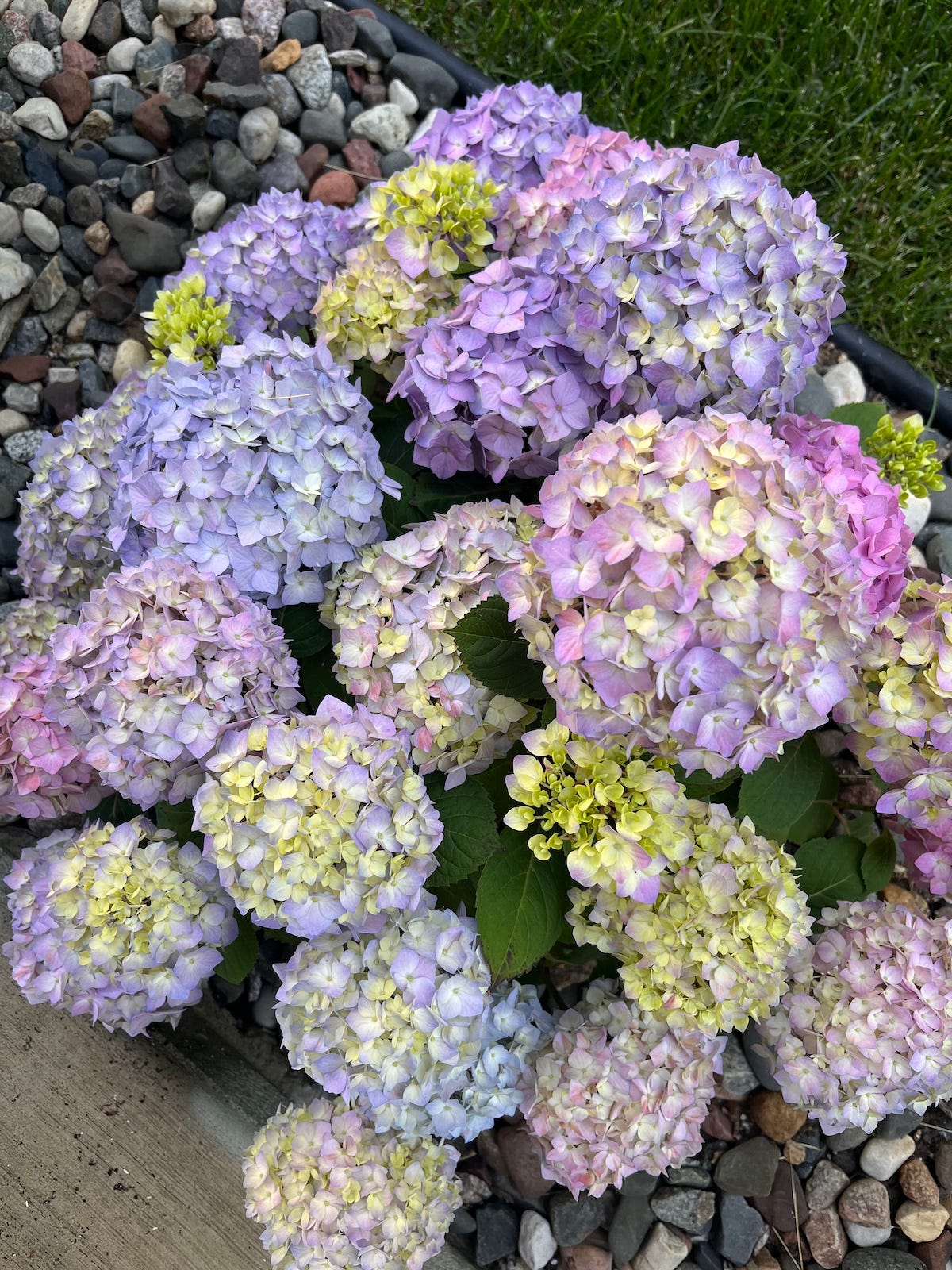Can You Change a Hydrangea's Color?
Feeling blue about all your pink hydrangeas? It's possible to change the color of blooms, but not easy.
I visited Memphis recently as part of the Fling, a gathering of garden communicators, and everywhere we turned the hydrangea flowers were bright, beautiful blue. In the Twin Cities, where I live, and other parts of the North most hydrangea flowers are white or pink. So why is Memphis enjoying the blues and we’re not?
It boils down to soil pH and aluminum uptake by plants.
First, a bit about hydrangeas
Hydrangeas are a fantastic shrub for northern gardens and they come in four basic types. For decades, northern gardeners could only grow paniculata or panicle hydrangeas (think Limelight, Quickfire, Strawberry Vanilla) or arborescens or smooth hydrangeas (Annabelle). Hardy to USDA Zone 3, these hydrangeas usually bloom white but sometimes are pink. Try as you may, they will NEVER bloom blue.
The third type of hydrangea is the oakleaf or Hydrangea quercifolia. This type looked fabulous in Memphis, but alas, it is only marginally hardy in the warmest parts of the Midwest. Also, the blooms are white.
The blue hydrangeas are Hydrangea macrophylla or Hydrangea serrata, which are called mophead or lacecap hydrangeas respectively. They have flatter flower heads and they can bloom pink, purple or blue.
Bring down the pH
To get blue blooms, the roots of the plants need to take in more aluminum ions. They can access more aluminum in soils with a lower (more acidic) pH. Generally, you need a soil pH of lower than 6 to get blue blooms. The soil in my garden in St. Paul had a pH of 7.3 and one of my community garden plots had a pH of 7.8. Nothing is blooming blue there!
A pH of 6.5 is considered good for garden soils. Most soils here tend to be higher. It’s not horrible soil, just not what you need for blue flowers. By contrast, the soils in Tennessee are very acidic.
Can you force a blue bloom?
Gardeners always seem to want what they can’t have, so you can find lots of instructions on the internet for turning flowers blue. This one from Endless Summer hydrangeas is short and to the point. Essentially, you have to force the pH in the soil around the plant to less than 6 to get a blue color. You do this by adding either a commercial soil acidifier or straight aluminum sulfate.
Follow all the directions on the packaging and keep in mind that this could take time. It may be two, three or more years before you can drive the pH down from the mid-7s to 6 or lower. Because you are trying to change the soil chemistry, it might work better in a more confined area, such as a raised bed, a small bed or even a container.
What about pine needles?
Whenever this topic comes up, I think about my mom. She grew blue hydrangeas in her backyard in a Twin Cities suburb. The hydrangeas were planted in a spot where there had been a big, very old pine tree. I also noted that many of the gardeners in Memphis used pine needles as a mulch.
Will pine trees or needles lower the pH of soil or add aluminum to the soil? No. Not really. Pine needles themselves have a low pH (3.5 or so) but as they decompose in the soil, their pH comes closer to neutral.
However, pine trees do tend to grow well in acidic soils. It’s possible the soil in my mom’s yard was just more acidic than typical garden soils due to underlying minerals. She lived near a lake — maybe that was a factor? Or, she may have been adding soil acidifier without telling me!
Whatever their color, hydrangeas are a great garden plant for the North with their long bloom time and pretty flowers.
What color are your hydrangea blooms? Have you had any luck changing the color?








Mine are pink! But what bothers me is when growers force the hydrangeas to bloom blue in the pot, then the homeowner buys it (because it's blue!) and thereafter, unless they add acidifiers to the soil, it will always be pink. It's a bit deceptive on the growers part!